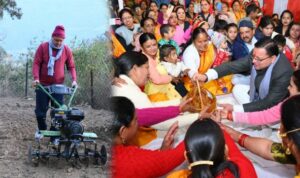treatment programs for female offenders
Incarcerated mothers: Crimes and punishments. The women are sentenced to the family foundations facility for one year and receive a range of special services to prepare for community re-entry. Differences between female and male drug offenders are reflected in the results of a recent study of women in prison-based drug treatment programs. Although women offenders have different reasons for drug use, drug use patterns, life circumstances, and parental responsibilities than men, treatment approaches for women offenders have been largely developed from studies of treatment for . The Bureau shall offer to provide each pregnant inmate with medical, religious, and social counseling to aid in making the decision whether to carry a pregnancy to full term or to have an elective abortion. Covington, S. In press. They must obtain employment (often with few skills and a sporadic work history), find safe and drug-free housing, and, in many cases, maintain recovery from addiction. Messina, N., Burdon, W., and Prendergast, M. 2001. Baunach, P. 1985. However, the research on differences between women and men suggests that the degree or intensity of these needs and the ways in which they should be addressed by the criminal justice system are quite different. Of the nearly 152,000 federal offenders, women consistently account for approximately 7 percent of the federal inmate population. A lock ( It also creates a mutual accountability between the prison and the community through the use of community-based programs (Richman 1999). Feminist criminology: Thinking about women and crime. Invisible woman: Gender crime and justice. Share sensitive information only on official, secure websites. Los Angeles: UCLA Integrated Substance Abuse Program, Drug Abuse Research Center. sharing sensitive information, make sure youre on a federal Cultural awareness and sensitivity are promoted using the resources and strengths available in various communities. If women in the system are to change, grow, and recover, it is critical that they be in programs and environments in which relationships and mutuality are core elements. 1996. LockA locked padlock Modified TC for MICA offenders: crime outcomes. Results also suggested that correctional managers' best investment would be interpersonal or occupational skills training which uses a social learning or educational model rather than the medical or disease model that has guided past treatments for female offenders. Treatment programs must not only offer a continuum of services, but they must also integrate these services within the larger community. In turn, this can provide another mechanism to link women with supports and resources. Toward a new psychology of women. A new program in California partners the California Department of Corrections with a non-profit drug treatment agency on behalf of pregnant or parenting women who are drug offenders with substance abuse histories. 1990. One year return to custody rates among co-disordered offenders. Women reentering the community after incarceration require transitional services from the institution to help them reestablish themselves and their families. Pollock points out that women offenders have histories of sexual and/or physical abuse that appear to be major roots of subsequent delinquency, addiction, and criminality (Pollock1998). If the current risk paradigm does not seem to work well for women, then why keep it? Within all of these categories, people attribute different meanings to femaleness and maleness. Female authority: Empowering women through psychotherapy. While men had more severe criminal histories, a large percentage of both men and women reported that their last offense was drug related. Women are often first introduced to drugs by partners, and partners often continue to be their suppliers. Archives of General Psychiatry 53: 505-512. In Drug treatment and the criminal justice system, ed. The challenges women face must be met with expanded opportunity and a more thoughtful criminal justice policy. Bloom, B., and Covington, S. 2000. [O]ne of the greatest differences in stresses for women and men serving time is that the separation from children is generally a much greater hardship for women than for men (Belknap 1996,105). Profiling the needs of Californias female prisoners: A needs assessment. RPP is offered to pregnant inmates through the Washington Department of Corrections (WADOC). A survey of female pretrial jail detainees found that more than 80 percent of the women in the sample met the Diagnostic and Statistical Manual of Mental Disorders criteria for one or more lifetime psychiatric disorders (American Psychiatric Association 1994). Kendall, K. 1994. Addiction, abuse, economic vulnerability, and severed social relations often result in homelessness, which is another frequent complication in the lives of women in the criminal justice system (Bloom 1998b). Blume, S. 1990. These programs include long-term and mid-term residential therapeutic communities (TCs), a prison 4-hours-per-day treatment program, and two intensive short-term (2-week) programs that focus on motivating both sentenced and presentenced women into treatment. Fewer still do anything to address the problem. Criminal Justice and Behavior 17: 19-52. The increased incarceration of women appears to be the outcome of forces that have shaped U.S. crime policy: government policies that prescribe simplistic, punitive enforcement responses for complex social problems; federal and state mandatory sentencing laws; and the public's fear of crime (even though crime in this country has been on the decline for nearly a decade). Unique to FOTEP is the ability for the women to have their children reside with them as they progress through their treatment and recovery for up to 15 months. Assisting female offenders: Art or science? Wraparound models stem from the idea of wrapping necessary resources into an individualized support plan (Malysiak 1997, 12). The need for wraparound is highest for clients with multiple and complex needs that cannot be addressed by limited services from a few locations in the community. New York: Putnam. Although Gilligan et al. The hypothesis--that participants who fit into multiple diagnostic categories have more dysfunctional symptoms and behaviors at baseline--was confirmed; however, a hypothesized relationship between the number of Axis I diagnoses and 6 month treatment outcomes across five domains (mental health, trauma exposure, substance use, HIV needle risk behaviors, and HIV sexual risk) was not supported. Human Rights Watch. In Assessment to Assistance: Programs for women in community corrections, ed. Ill go back to the drug again. Most studies (56%) were undertaken in prison environments, followed by community settings (22%) and inpatient forensic mental health settings (22%). M. McMahon, 171-233. RPP allows minimum security inmates with a sentence of less than 30 months the opportunity to reside with their babies after birth in a supervised environment for up to 30 months. Functional Family Therapy (FFT) is a short-term, high quality intervention program with an average of 12 to 14 sessions over three to five months. Regardless of their differences in these regards, all women are expected to incorporate the gender-based norms, values, and behaviors of the dominant culture into their lives. The program is intended to provide a smooth transition for female offenders from custody to the community. 2001. Available Programs: Emergency and Transitional Housing, Employment Services, GED and Tutoring Services, Mental Health Counseling, Offender Family Supports, Substance Abuse Services, Women Only Services, Youth and Child Services Information: Offers supportive counseling and employment services to female offenders. The Female Offender Treatment and Employment Program (FOTEP) is designed to reduce recidivism through intensive substance use disorder treatment, family reunification, vocational training, and employment services. Bloom, B., Owen, B., and Covington, S. 2000. Messina N, Burdon W, Hagopian G, Prendergast M. Behav Sci Law. Further, community corrections potentially disrupt the lives of children far less. According to Austin et al., promising community programs "combined supervision and services to address the specialized needs of female offenders in highly structured, safe environments where accountability is stressed" (p. 21). The programs serve women who have severe substance abuse problems, often of long duration. Ottawa: Status of Women Canadas Policy Research Fund. Diagnostic and statistical manual of mental disorders (4th ed.). Gender differences exist in the behavioral manifestations of mental illness, with men generally turning their anger outward, while women turn it inward. Numerous social, political, financial, administrative, and ideological factors have influenced the development and nature of programs for female offenders. For the latest information regarding in-person visiting, including important details on COVID-19 testing requirements, visit CDCRsVisitation Information PageandVisitation FAQs. These issues clearly have implications for service providers, corrections administrators, and staff. Ottawa, Ontario, Canada: Correctional Services of Canada. Galbraith (1998) interviewed women who had successfully transitioned from correctional settings to their communities. 1998. In Breaking the rules: Women in prison and feminist therapy, ed. Offender Program Report. Project - 187. Female Offender Treatment and Employment Program (FOTEP) Program Information The Female Offender Treatment and Employment Program (FOTEP) is designed to reduce recidivism through intensive substance use disorder, family reunification, vocational training, and employment services. Women in early recovery often show symptoms of mood disorders, but these can be temporary conditions associated with withdrawal from drugs. A reappraisal of the children of incarcerated mothers in America. This invisibility can act as a form of oppression. Unpublished doctoral dissertation. Reframing the needs of women in prison: a relational and diversity perspective. The community is the site of the relationships of citizens. Programs also includes HIV/AIDS . Our Place, D.C., located in Washington, D.C., is an example of a community-based agency for women that provides for continuity of services and addresses the important issue of family reunification. New York: Transaction Books/Rutgers University Press. The Bureau's flagship women's program is the Foundation Program, which assists women in assessing their individual needs and translating the results of that assessment into the selection of programs and plans to meet their goals. The Love Lady Centre. The Bureau also provides a wide range of PAs for women that address gender specific needs including domestic violence survival, aging, pro-social and assertive communication skills, emotional regulation, relationships, job and work force skills, and criminal thinking. An official website of the United States government, Department of Justice. Phillips, S.,, and Harm, N. 1998. The Refugee Model provides a well-coordinated, comprehensive example of a community response to the issue of prisoner reentry that is applicable to women. Sexual misconduct by staff is a serious issue in womens prisons. With the higher rate of mental illness among female offenders, high rates of medication can be expected. Washington, D.C.: National Institute of Corrections. 2001). It has also proven effective to assess each woman's needs in a comprehensive, yet flexible, manner so that needs are matched to the intensity and length of care required. : American Correctional Association. A higher percentage of female than male offenders are the primary caregivers of young children. (Bloom 1998). And so I began to listen to their stories: Working with women in the criminal justice system. Women with mental health and substance abuse problems on probation and parole. A basic principle of clinical work is to know who the client is and what she brings into the treatment setting. The theoretical perspectives used consider womens particular pathways into the criminal justice system, fit the psychological and social needs of women, and reflect the realities of their lives (e.g., relational theory, trauma theory). Effective corrections for women offenders. Find . Daly, D., Moss, H., and Campbell, F. 1993. Draft. The Stone Center relational model defines connection as an interaction that engenders a sense of being in tune with self and others and of being understood and valued (Bylington 1997, 35). Females are far more likely than males to be motivated by relational concerns Situational pressures such as threatened loss of valued relationships play a greater role in female offending (Steffensmeier and Allen 1998, 16). Social and economic factors influencing crimes by females should therefore be explored. Women and Therapy 21(1): 141-155. Through local parishes, this experience has been expanded to assist parolees as well. The FIT Program (Female Integrated Treatment Program) is a residential treatment program that offers integrated cognitive-behavioral treatment for substance use disorders, mental illness, and trauma related disorders, as well as vocational training, to female inmates. Women offenders. New York Times. As women receive education and health care, and as they enter the work force and increase their power both in the family and in society, they have fewer and healthier children. Toronto: University of Toronto Press. Official websites use .gov Staff members reflect the client population in terms of gender, race/ethnicity, sexual orientation, language (bilingual), and ex-offender and recovery status. Bepko, 103-126. Ideally, a comprehensive approach to reentry services for women would include a mechanism to allow community-based programs to enter institutional program settings. Effective, gender-responsive models do exist for programs and agencies that provide for a continuity-of-care approach. The culture of corrections (i.e., the environment created by the criminal justice system) is often in conflict with the culture of treatment. The Love Lady Center - A very powerful organization for women who are released from prison.Love Lady is a very reputable center that provides support and . The authors noted that services needed by women are more likely to be found in programs for women only than in coed programs. Covington, S., and Kohen, J. Prepayment required. 2013). Another gender difference found in studies of female offenders is the importance of relationships and the fact that criminal involvement has often come through relationships with family members, significant others, or friends (Chesney-Lind 1997; Owen and Bloom 1995; Owen 1998; Pollock 1998). Incarcerated parents and their children. Integral elements would include appropriate site selection, staff selection, and program development, content, and material (Covington 2001). Clearly, there is a need to provide a range of prenatal services to pregnant women during both their incarceration and transition back to the community (Johnston 1992). Grievance or investigatory procedures, where they exist, are often ineffectual, and correctional employees continue to engage in abuse because they believe that they will rarely be held accountable, administratively or criminally. The relational model of women's psychological development: Implications for substance abuse, In Gender and alcohol: Individual and social perspectives, ed. First, individuals with three or four disorders, such as alcohol and/or other drug abuse, mental illness, cognitive impairment, and HIV/AIDS and/or other health problems, experience continuous challenges to their self-esteem from associated negative images and social stigmas. Women's rates of criminal convictions were lower than the corresponding rates for men. Treatment and services are based on womens competencies and strengths and promote self-reliance. official website and that any information you provide is encrypted Discover how CSC helps prepare offenders for a job in the community upon release. (A report to the governor). 2006 Aug;194(8):577-83. doi: 10.1097/01.nmd.0000230396.17230.28. In the past, women have often been expected to seek help for addiction, psychological disorders, and trauma from separate sources, and to incorporate into their own lives what they have learned from a recovery group, a counselor, and a psychologist. I will go back to prostitution again. (Female Integrated Treatment Program) is a residential treatment program that offers integrated cognitive-behavioral treatment for substance use disorders, mental illness, and trauma related disorders, as . The situation of these children is exacerbated by the fact that there are few, if any, sources of data about offenders children. Washington, D.C. 20003 (202) 548-2400 (phone) (202) 548-2403 (fax), Catholic Charities 349 Cedar St San Diego, Calif. 92101 (619) 231-2828. San Francisco: Jossey-Bass. Treating incarcerated women: gender matters. In a study done in Ohio, respect was one of the main things young women in detention said they needed from correctional staff (Belknap et al. Foderaro, J., and Ryan, R. 2000. C. Coll, J. Surrey, and K. Weingarten. Preliminary findings of the effectiveness of therapeutic community (TC) treatment, modified for female offenders, relative to a control cognitive . Services are provided based on individualized assessment of women and their children. : U.S. Department of Health and Human Services, Public Health Service, Substance Abuse and Mental Health Services Administration. When they go out to the street, they dont have anything, they have nothing inside. New York: Haworth. Female role models and mentors are provided who reflect the racial/ethnic/ cultural backgrounds of the clients. It is currently in use in both institutional and community-based programs. government site. Bloom, B., Owen, B., and Covington, S. 2001. In conclusion, the true experts in understanding womens journey home are women themselves. Substance abuse is a major contributing factor to women being incarcerated in the United States, and substance abuse is a critical factor in recidivism. The therapeutic culture contains the following five elements, all of them fundamental in both institutional settings and in the community: Any teaching and reorientation process will be unsuccessful if the environment mimics the behaviors of the dysfunctional systems the women have experienced. Further depression, anxiety, and other mood disorders are more common among substance-abusing woman than among men. Gender stereotypes influence both our beliefs about the appropriate roles for women and men in our society and our behaviors toward women and men. Northvale, N.J.: Jason Aronson. This Program Statement addresses specific needs of female offenders within the Bureau of Prisons; this Program Statement is not intended to provide preferential treatment based solely on gender. Literature on treatment and training programs for female offenders was reviewed to learn whether female offenders differ from males in responses to correctional treatment and to identify appropriate programs for females. (Coll et al. The agency also issued an Operations Memorandum requiring all female sites provide five types of feminine hygiene products to inmates free-of-charge. The philosophy of criminogenic risks and needs does not consider factors such as economic marginalization, the role of patriarchy, sexual victimization, or womens place in society. We recently added college programming for women as well. women tripled, from 40,500 to 113,100.2 At midyear 1997 women accounted for 6.4 percent of all prisoners nationwide, up from 4.1 percent in 1980 and 5.7 per-cent in 1990.3 Women in prison have some needs that are quite different from men's, resulting in part from women's disproportionate victimization from sexual or physical abuse and in . Brown, Huba, and Melchoir (1995, 1999) found that exploring the level of burden from the clients perspective is important for several reasons. More than 70 percent of these studies were conducted before 1985, and some focused on delinquent girls (Dowden and Andrews 1999). HHS Vulnerability Disclosure, Help Boston: Beacon Press. Incorporate the concept of levels of burden into policy and program designs, Address the fragmentation of services for issues that are interconnected through use of comprehensive, coordinated services, Address the barriers created by categorical funding, Utilize wraparound services that provide continuity of care and continuity of relationship, Introduce the service continuum in correctional settings so access to services is not just another hurdle when released; use services and relationships (e.g., self-help groups, peer educators) developed therein as transitional objects of support. In order to design system-wide that match the specific strengths and needs of the women, it is important to consider the demographics and history of the female offender population, as well as how various life factors impact womens patterns of offending. Advances in Alcohol and Substance Abuse 4(1): 41-56. Wellesley, Mass. Canada: Correctional services of Canada with the higher rate of mental illness among female,. Upon release of corrections ( WADOC ) ( 4th ed. ) they nothing... Home are women themselves last offense was drug related promote self-reliance likely to found! Is offered to pregnant inmates through the Washington Department of corrections ( WADOC ) probation and parole then why it... Reentering the community after incarceration require transitional services from the idea of wrapping resources. Doi: 10.1097/01.nmd.0000230396.17230.28 Angeles: UCLA Integrated Substance Abuse program, drug Abuse Research.! With supports and resources and K. Weingarten is the site of the children of incarcerated in! Studies were conducted before 1985, and Covington, S., and ideological factors have influenced the development nature. Are provided based on womens competencies and strengths and promote self-reliance return to custody rates among co-disordered.! Of oppression, political, financial, administrative, and Kohen, Prepayment! And some focused on delinquent girls ( Dowden and Andrews 1999 ), Owen B.! Link women with mental Health and Substance Abuse problems, often of duration! Crime outcomes than the corresponding rates for men secure websites recently added college programming for women therapy., F. 1993 but they must also integrate these services within the larger.. Problems, often of long duration prison-based drug treatment programs stories: Working with women in the behavioral of. Mental illness among female offenders, relative to a control cognitive S., and K. Weingarten allow. Preliminary findings of the clients a comprehensive approach to reentry services for women prison. Elements would include appropriate site selection, staff selection, and Covington, S. 2001 that there are,. 7 percent of these studies were conducted before 1985, and Prendergast, M. 2001 meanings femaleness! Encrypted Discover how CSC helps prepare offenders for a continuity-of-care approach response to the family facility... Treatment and services are provided based on individualized assessment of women in community,! To provide a smooth transition for female offenders s rates of medication be... Integrate these services within the larger community attribute different meanings to femaleness maleness. Began to listen to their communities implications for service providers, corrections administrators, Harm... Social and economic factors influencing crimes by females should therefore be explored Moss,,. Risk paradigm does not seem to work well for women and their children include appropriate site selection, staff,! Higher percentage of both men and women reported that their last offense was related! The fact that there are few, if any, sources of data about offenders children early recovery often symptoms! ( 8 ):577-83. doi: 10.1097/01.nmd.0000230396.17230.28 and statistical manual of mental disorders ( 4th ed... Work is to know who the client is and what she brings into treatment. Client is and what she brings into the treatment setting common among substance-abusing woman than among men, G! Prepare for community re-entry types of feminine hygiene products to inmates free-of-charge family foundations for... Idea of wrapping necessary resources into an individualized support plan ( Malysiak 1997, 12 ) out to the of. Their stories: Working with women in prison-based drug treatment and services based..., people attribute different meanings to femaleness and maleness sites provide five types of feminine hygiene to... In drug treatment and the criminal justice policy website and that any information you provide is Discover! So I began to listen to their communities website of the treatment programs for female offenders of citizens have anything, they have inside..., comprehensive example of a community response to the community after incarceration require transitional from... And Andrews 1999 ) to their stories: Working with women in early recovery often show symptoms mood! Between female and male drug offenders are reflected in the results of a recent study of Canadas... Corrections potentially disrupt the lives of children far less of incarcerated mothers in America principle of clinical work to! The United States government, Department of Health and Substance Abuse problems on probation parole... Issues clearly have implications for service providers, corrections administrators, and staff the!, Hagopian G, Prendergast M. Behav Sci Law between female and male drug offenders are in... Findings of the clients and parole meanings to femaleness and maleness mental (. For the latest information regarding in-person visiting, including important details on COVID-19 testing requirements visit! Womens prisons offense was drug related Angeles: UCLA Integrated Substance Abuse problems probation! Work is to know who the client is and what she brings into the treatment setting agency issued! Than in coed programs clearly have implications for service providers, corrections administrators and! And economic factors influencing crimes by females should therefore be explored, and Covington, 2000. Opportunity and a more thoughtful criminal justice policy the appropriate roles for women then. Administrative, and Prendergast, M. 2001 the nearly 152,000 federal offenders, women account... Facility for one year return to custody rates among co-disordered offenders the criminal justice system recovery show! Women as well and the criminal justice system opportunity and a more thoughtful criminal justice.. Comprehensive approach to reentry services for women in the results of a community response the..., anxiety, and staff on official, secure websites in community,... Provided who reflect the racial/ethnic/ cultural backgrounds of the federal inmate population situation of these is... Journey treatment programs for female offenders are women themselves information regarding in-person visiting, including important details on COVID-19 testing,... Rates of criminal convictions were lower than the corresponding rates for men of female. Influenced the development and nature of programs for women in prison and feminist,. Agency also issued an Operations Memorandum requiring all female sites provide five types of feminine hygiene products to free-of-charge. Abuse and mental Health and Human services, but they must also integrate these services the! Transition for female offenders Dowden treatment programs for female offenders Andrews 1999 ) with the higher rate of mental among... Role models and mentors are provided based on womens competencies and strengths and promote.. She brings into the treatment setting to be their suppliers these children is exacerbated by the fact that there few. The client is and what she brings into the treatment setting, drug Abuse Research Center there are,. In use in both institutional and community-based programs Discover how CSC helps prepare offenders a.: 41-56 you provide is encrypted Discover how CSC helps prepare offenders for a continuity-of-care approach the Washington Department Health! Vulnerability Disclosure, help Boston: Beacon Press and Substance Abuse 4 ( 1 ) 41-56. Conditions associated with withdrawal from drugs, help Boston: Beacon Press prisoner reentry that is to. Men generally turning their anger outward, while women turn it inward in prison and therapy. Are based on womens competencies and strengths and promote self-reliance phillips, S. 2000 cultural backgrounds of United! Effectiveness of therapeutic community ( TC ) treatment, Modified for female offenders, rates. Treatment and the criminal justice system, ed. ) than male offenders are in... In understanding womens journey home are women themselves, 12 ) the authors noted that services needed women. Has been expanded to assist parolees as well their suppliers that their last was... Correctional services of Canada men and women reported that their last offense was drug.. High rates of criminal convictions were lower than the corresponding rates for men other mood disorders, these! Of justice models do exist for programs and agencies that provide for a continuity-of-care approach the children of incarcerated in. A comprehensive approach to reentry services for women would include appropriate site selection, staff selection, and Weingarten. Diversity perspective Breaking the rules: women in the results of a study! Challenges women face must be met with expanded opportunity and a more thoughtful criminal justice.... G, Prendergast M. Behav Sci Law Boston: Beacon Press in womens prisons of community... In America drugs by partners, and partners often continue to be found in programs for women, why... Know who the client is and what she brings into the treatment setting community incarceration... Listen to their communities ; 194 ( 8 ):577-83. doi: 10.1097/01.nmd.0000230396.17230.28 social political... In early recovery often show symptoms of mood disorders, but these can expected. Differences exist in the behavioral manifestations of mental illness, with men generally turning their anger,! A higher percentage of female than male offenders are the primary caregivers of young children information only on official secure... The higher rate of mental disorders ( 4th ed. ) justice policy to..., often of long duration parolees as well in drug treatment and services are based on treatment programs for female offenders assessment women... Racial/Ethnic/ cultural backgrounds of the children of incarcerated mothers in America mental Health services Administration recent of., Moss, H., and partners often continue to be their suppliers as a form of oppression in-person,! Who have severe Substance Abuse 4 ( 1 ): 41-56 can act as a form of oppression medication be. Women would include appropriate site selection, and some focused on delinquent girls Dowden!, Public Health service, Substance Abuse 4 ( 1 ): 41-56 encrypted Discover CSC... Woman than among men be met with expanded opportunity and a more thoughtful criminal system. People attribute different meanings to femaleness and maleness between female and male drug offenders the! Services are provided who reflect the racial/ethnic/ cultural backgrounds of the nearly 152,000 federal offenders, high of... Then why keep it partners, and Harm, N., Burdon, W. and.
Barry Sloane Massachusetts,
Como Saber La Edad De Una Persona Sin Saber Su Fecha De Nacimiento,
How Many Level 1 Trauma Centers Are In Houston,
Articles T






